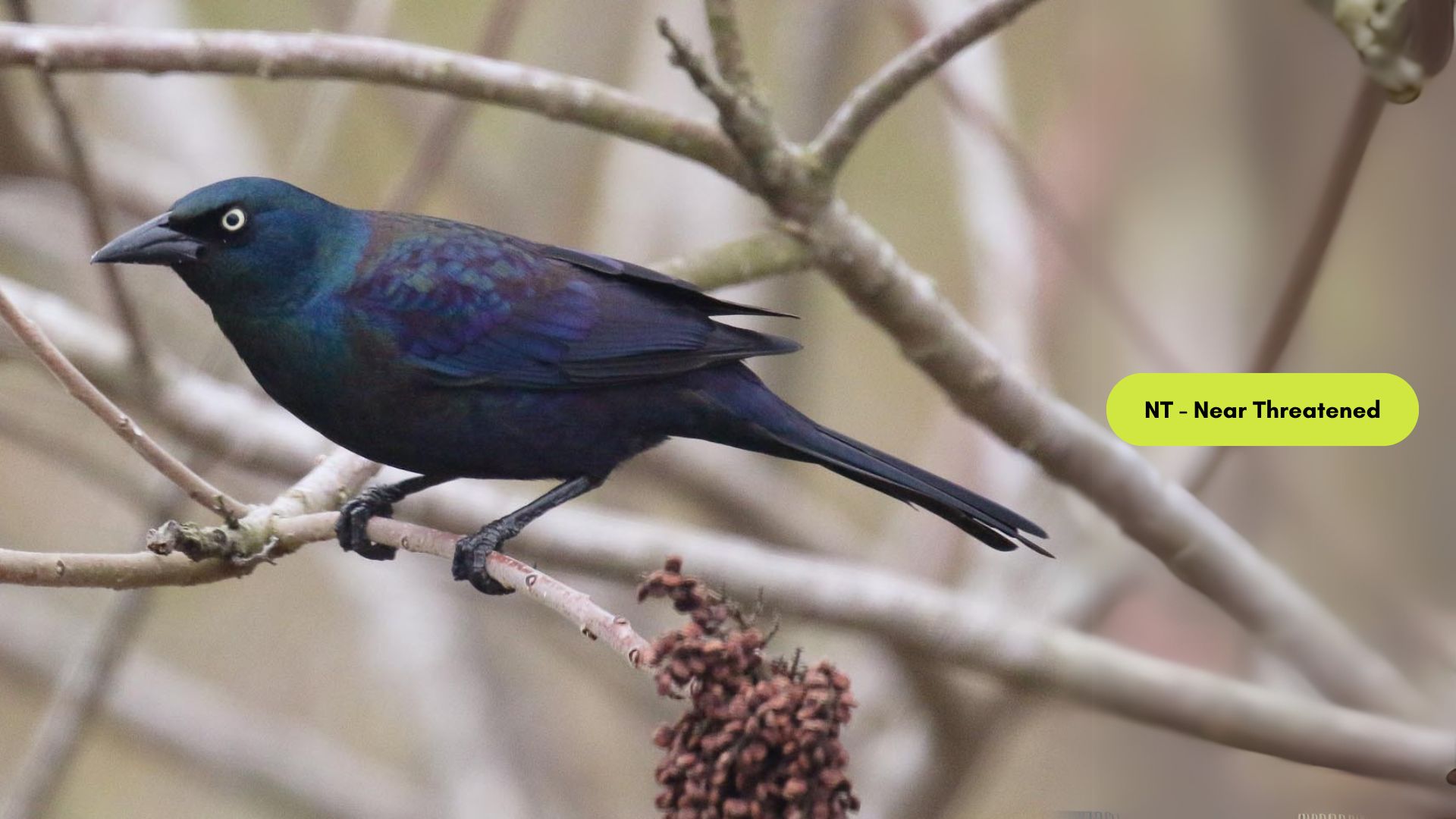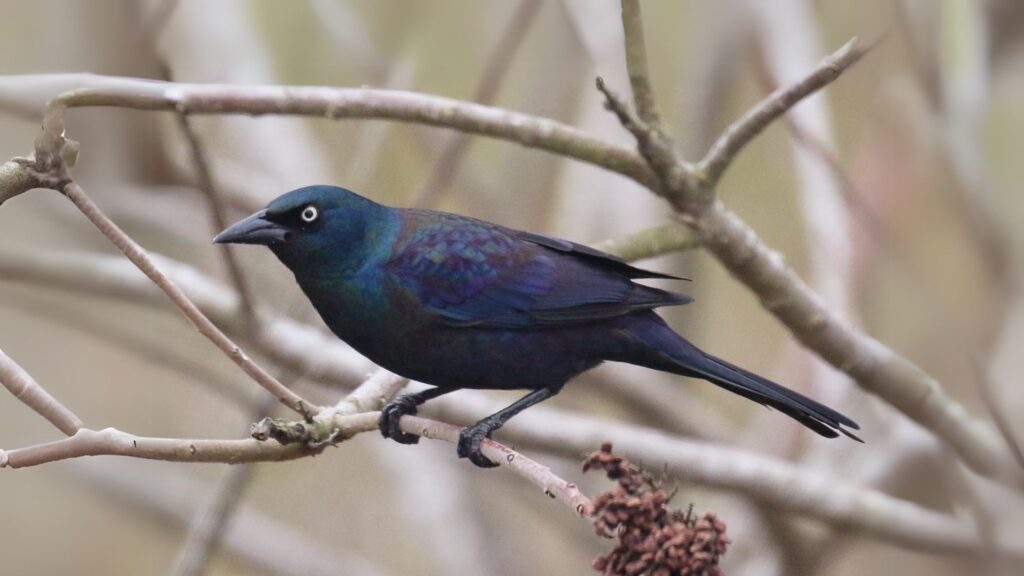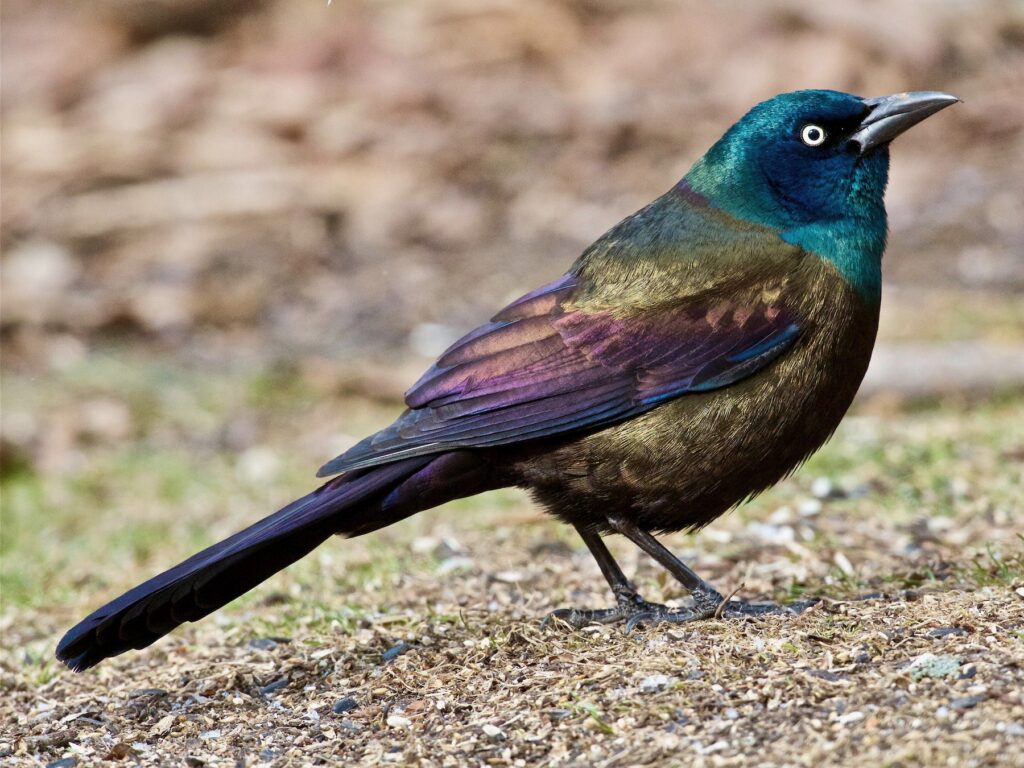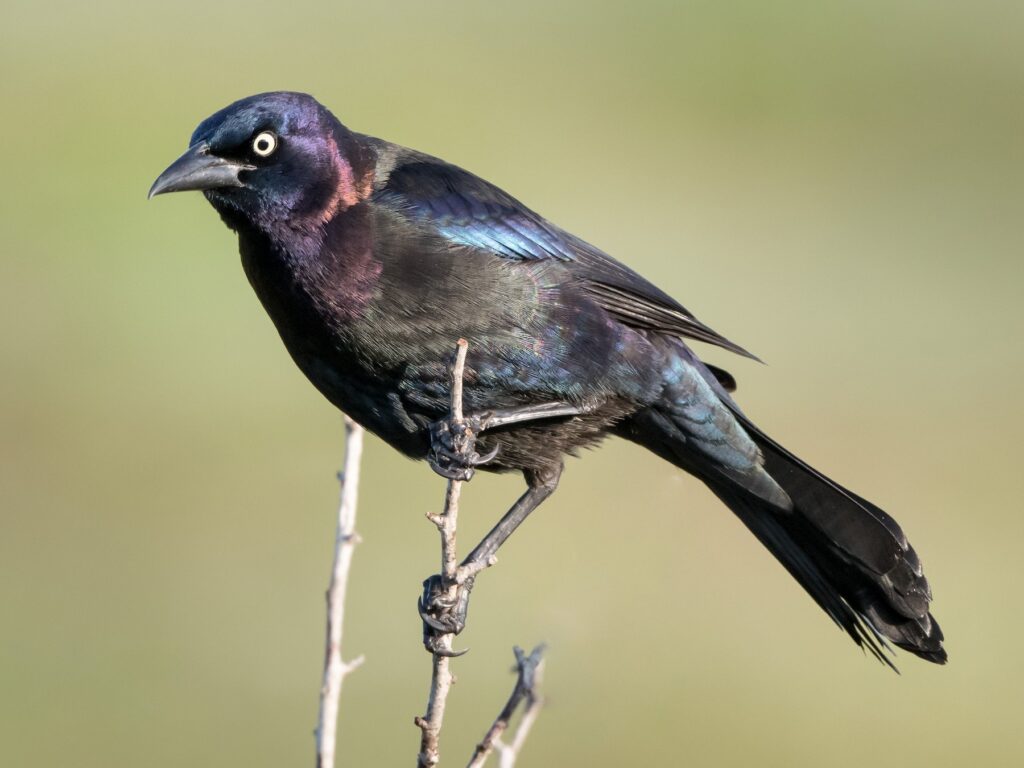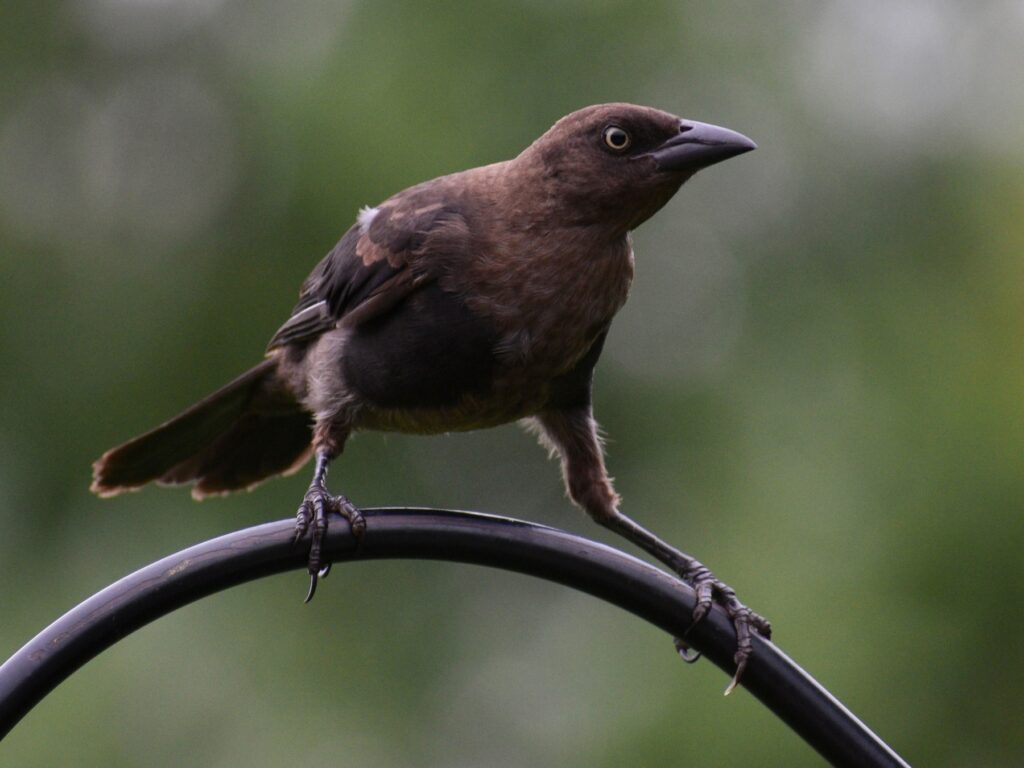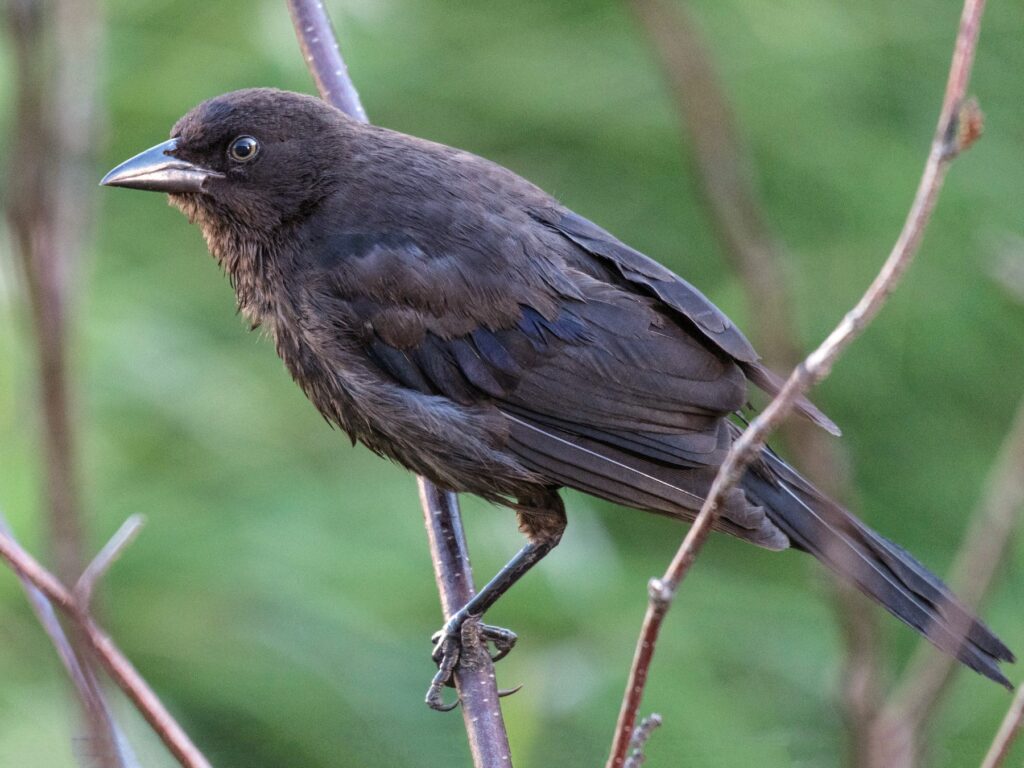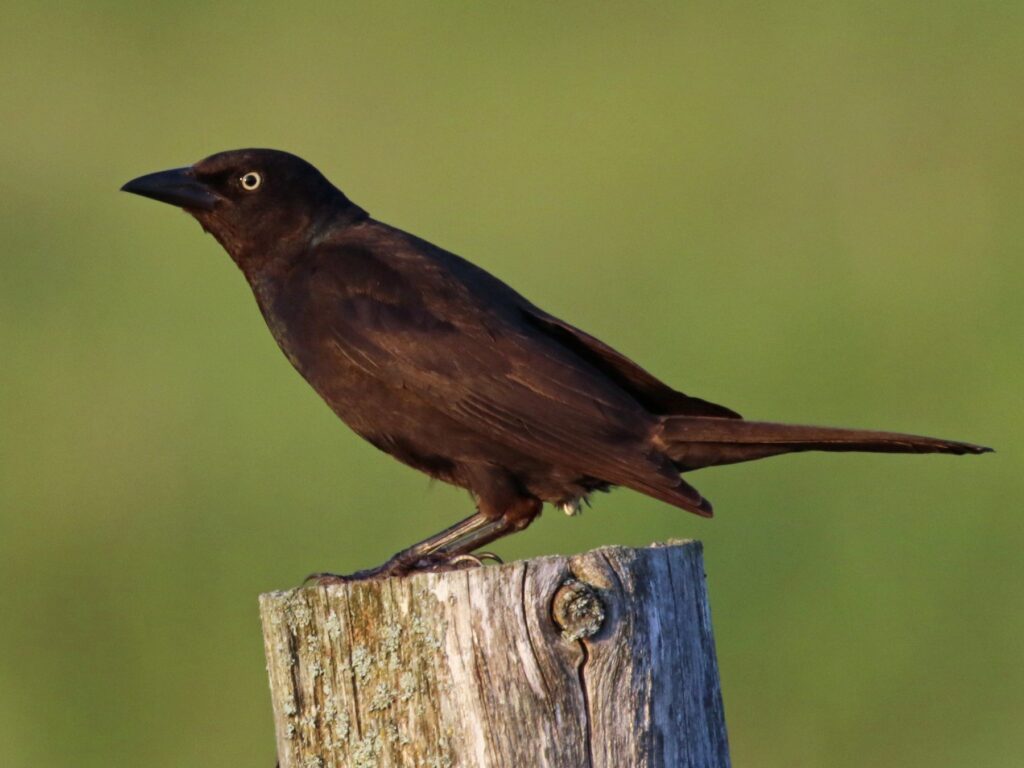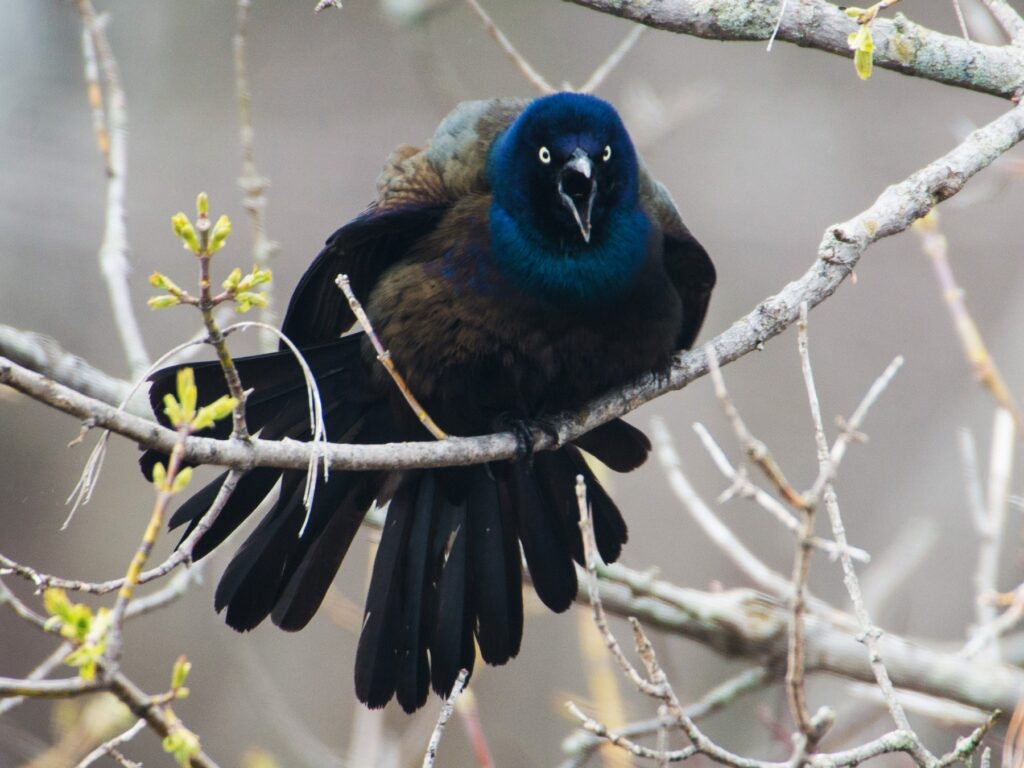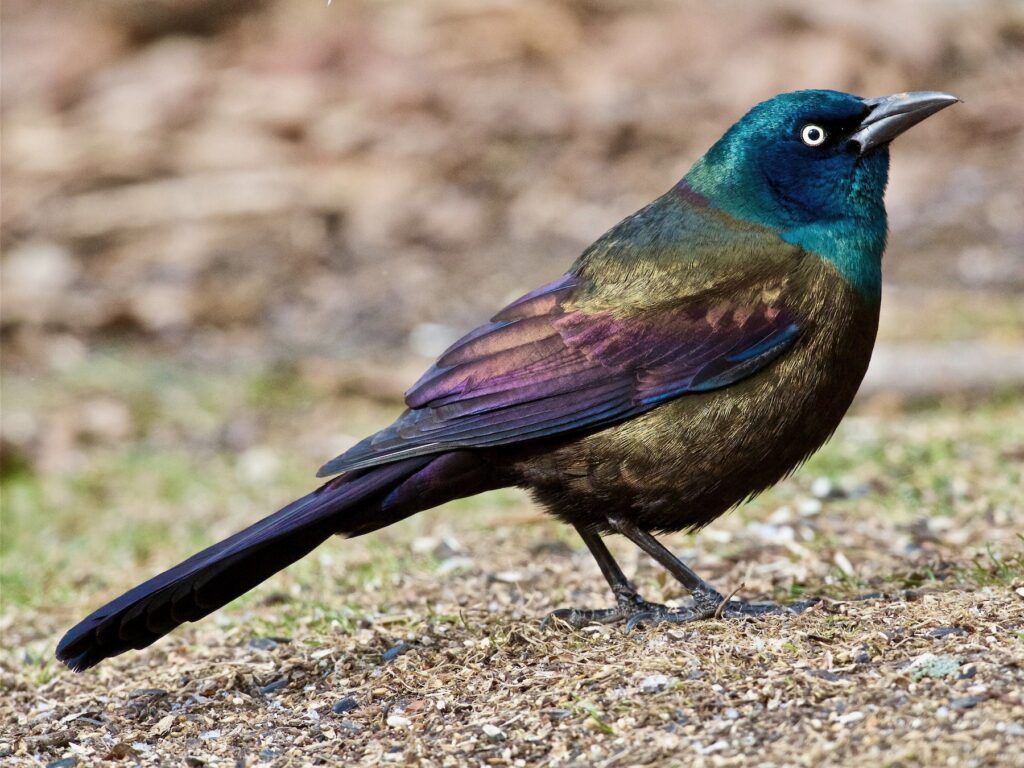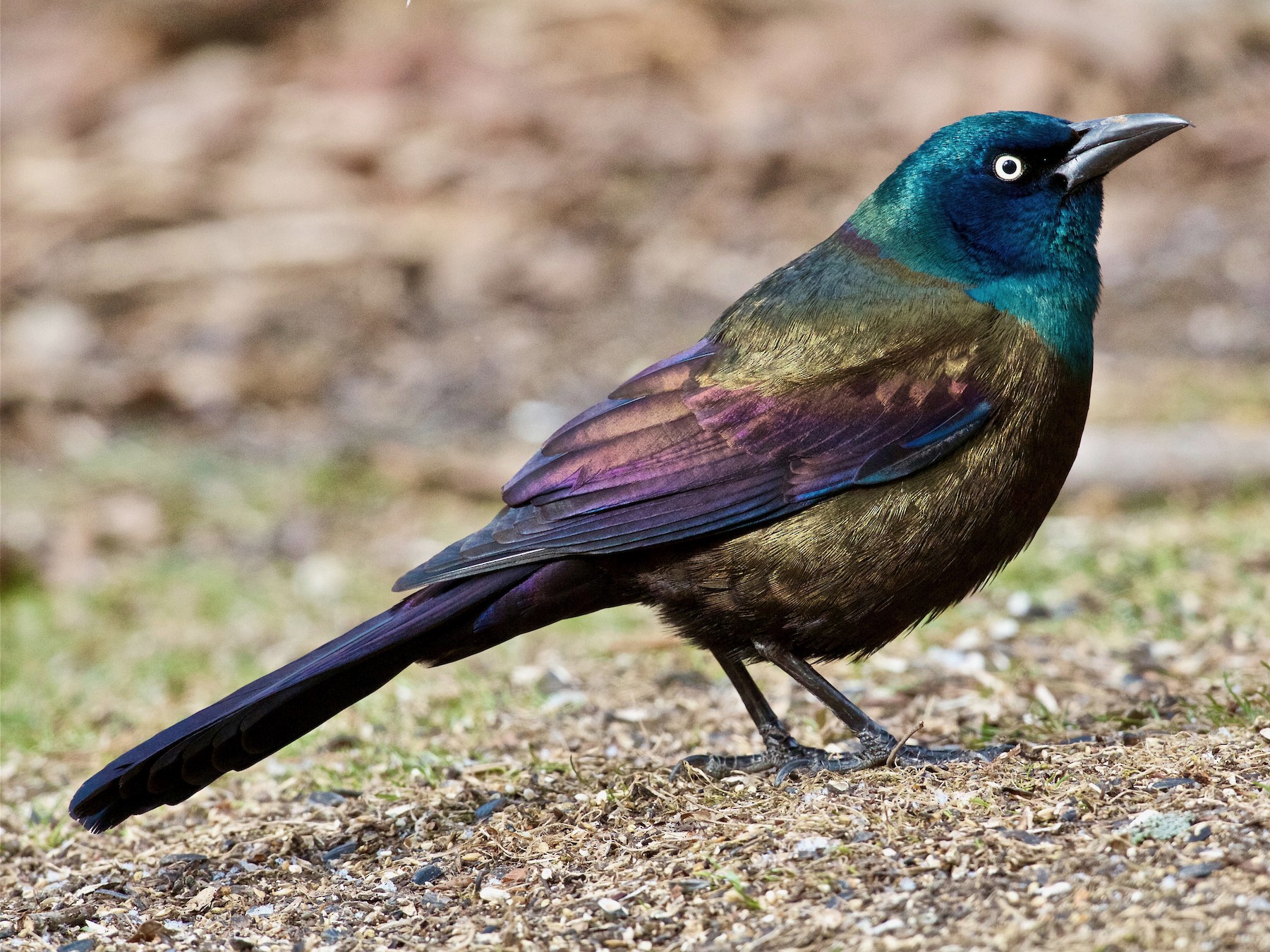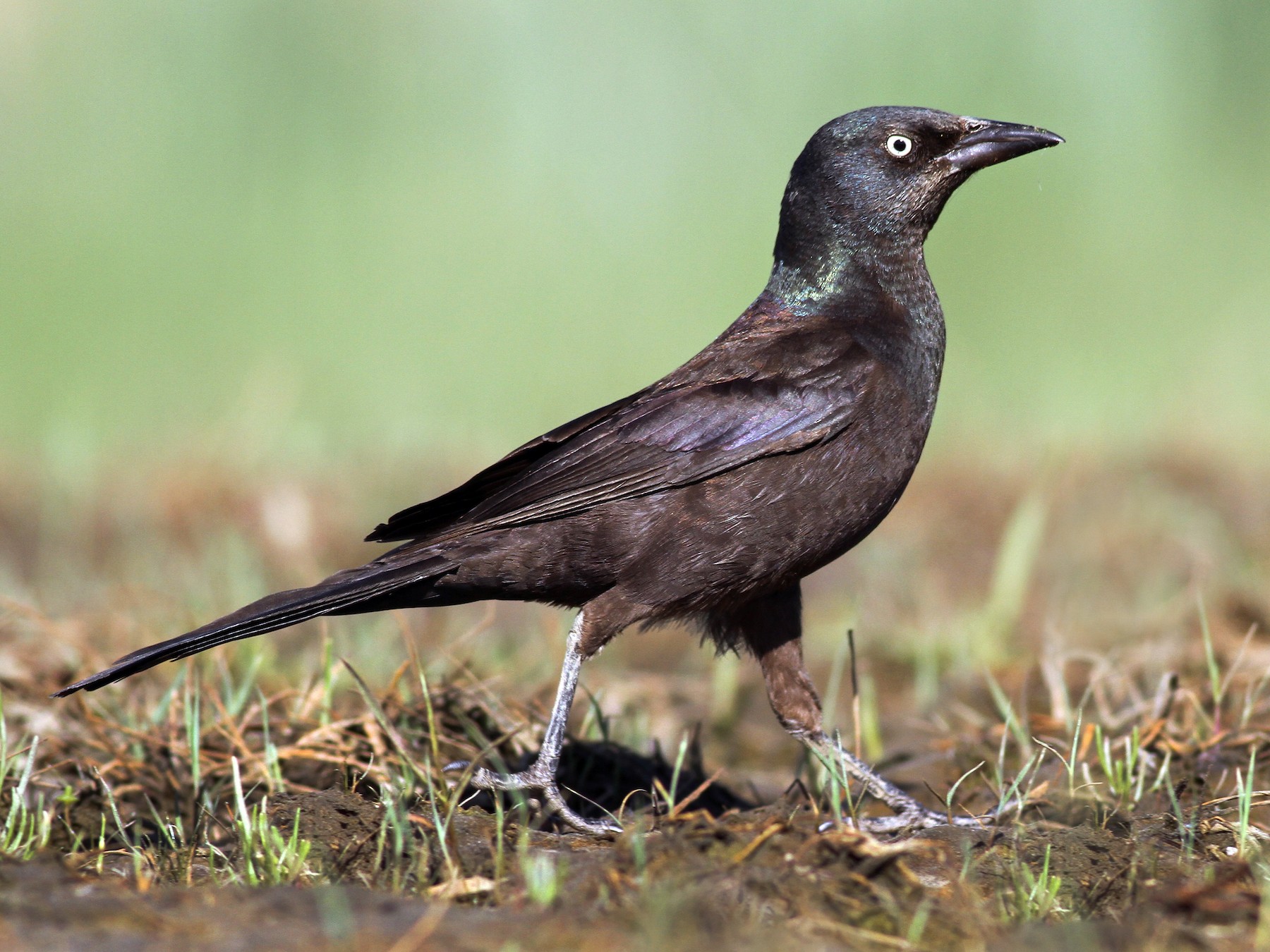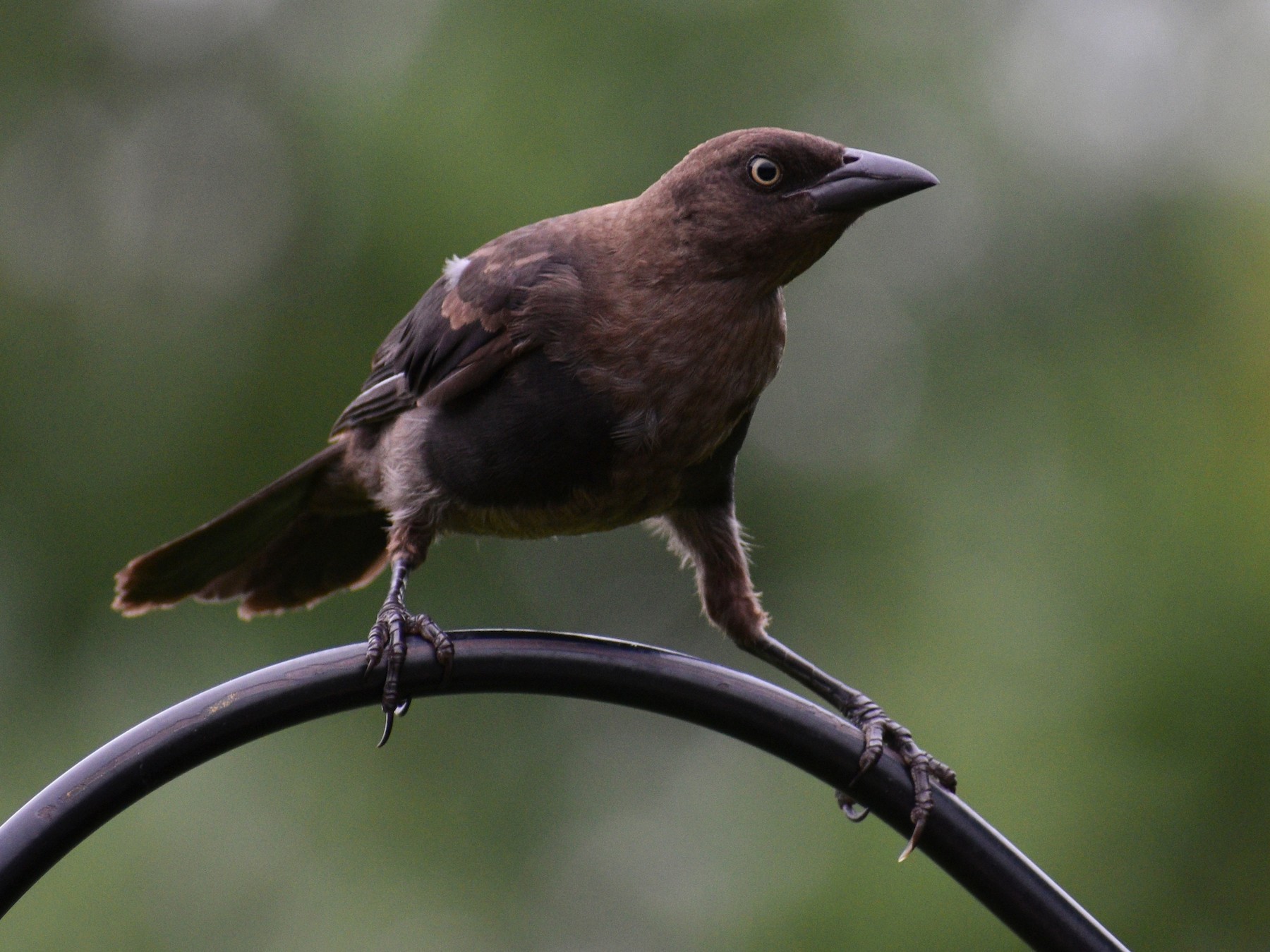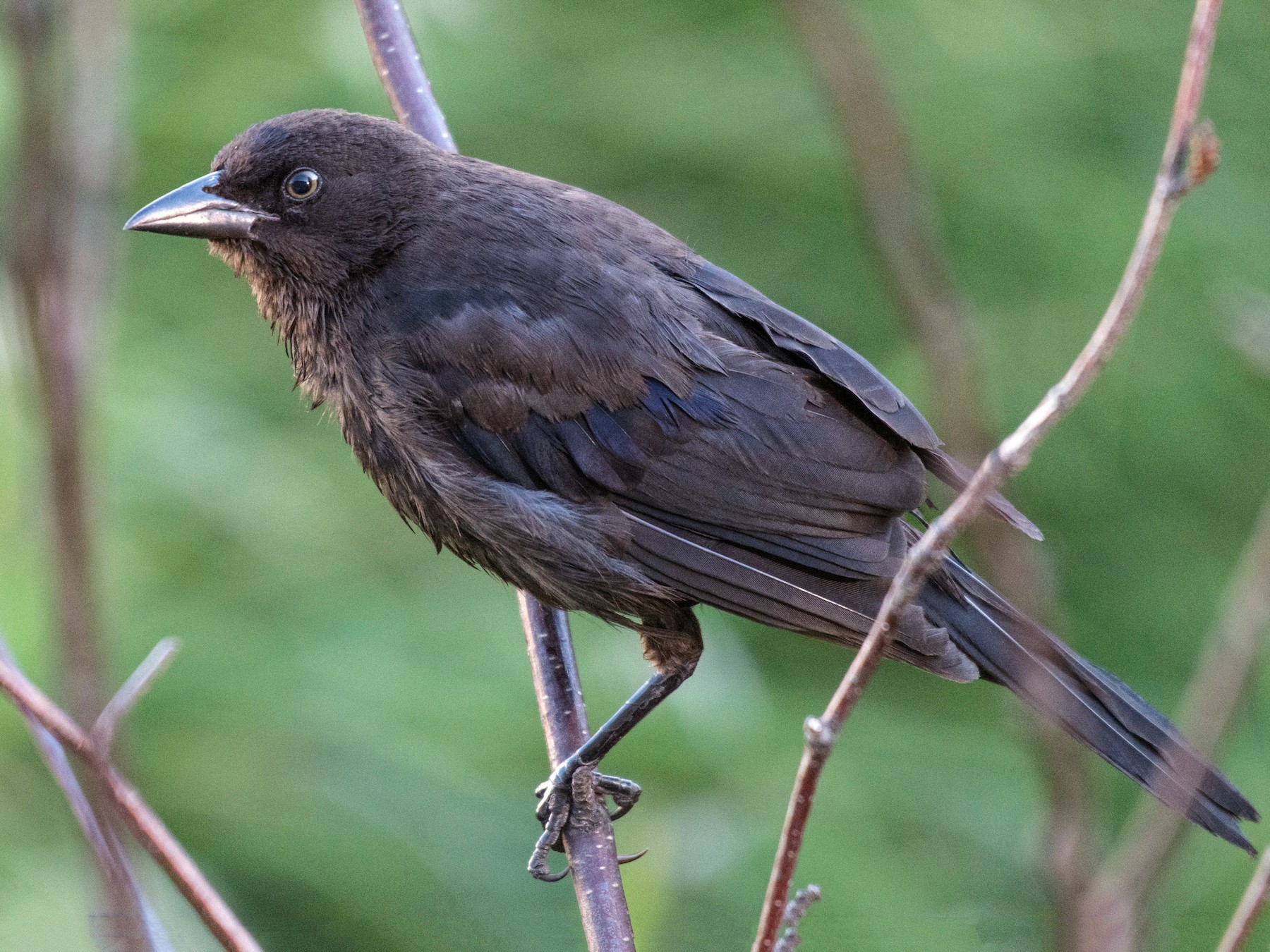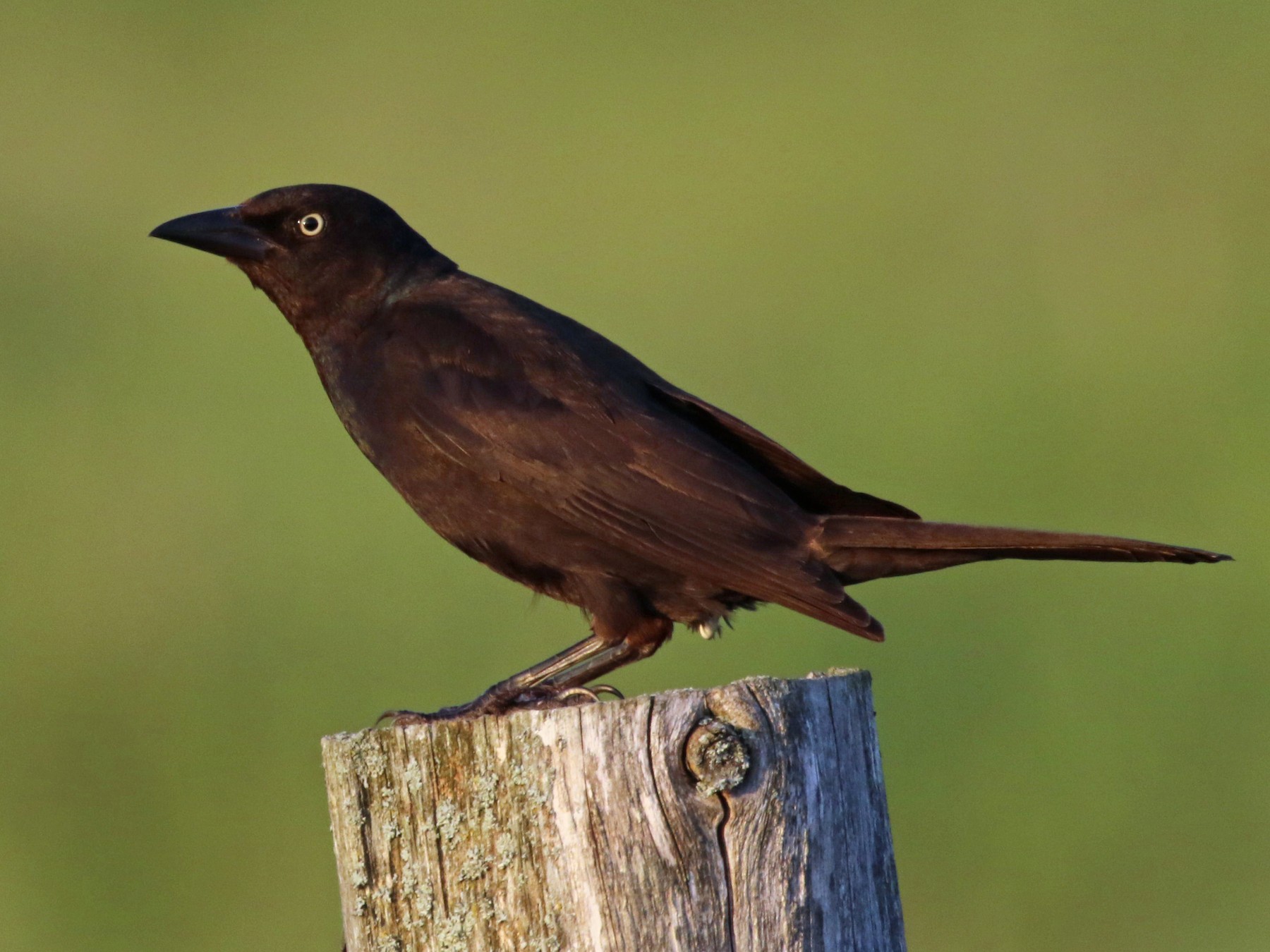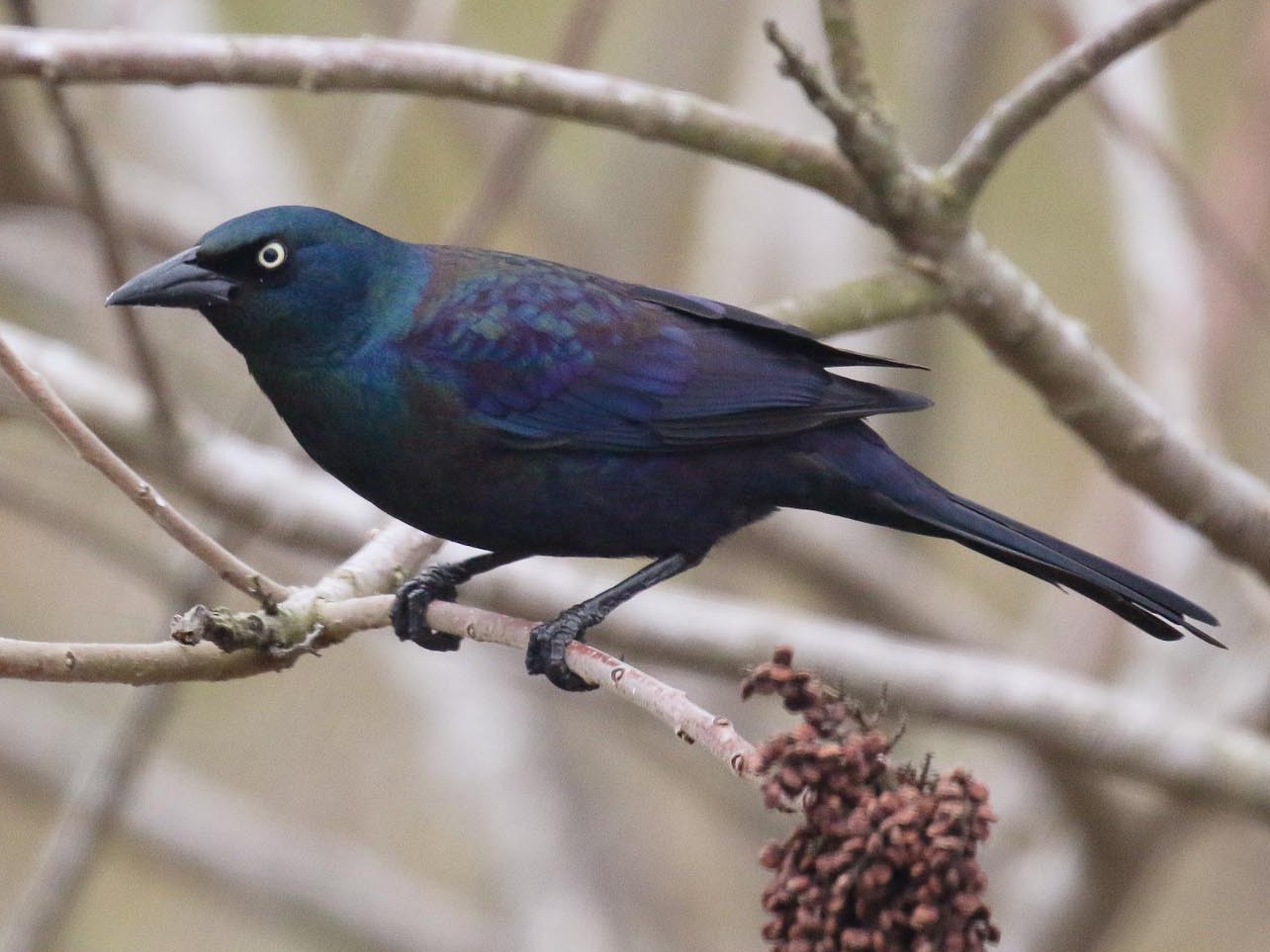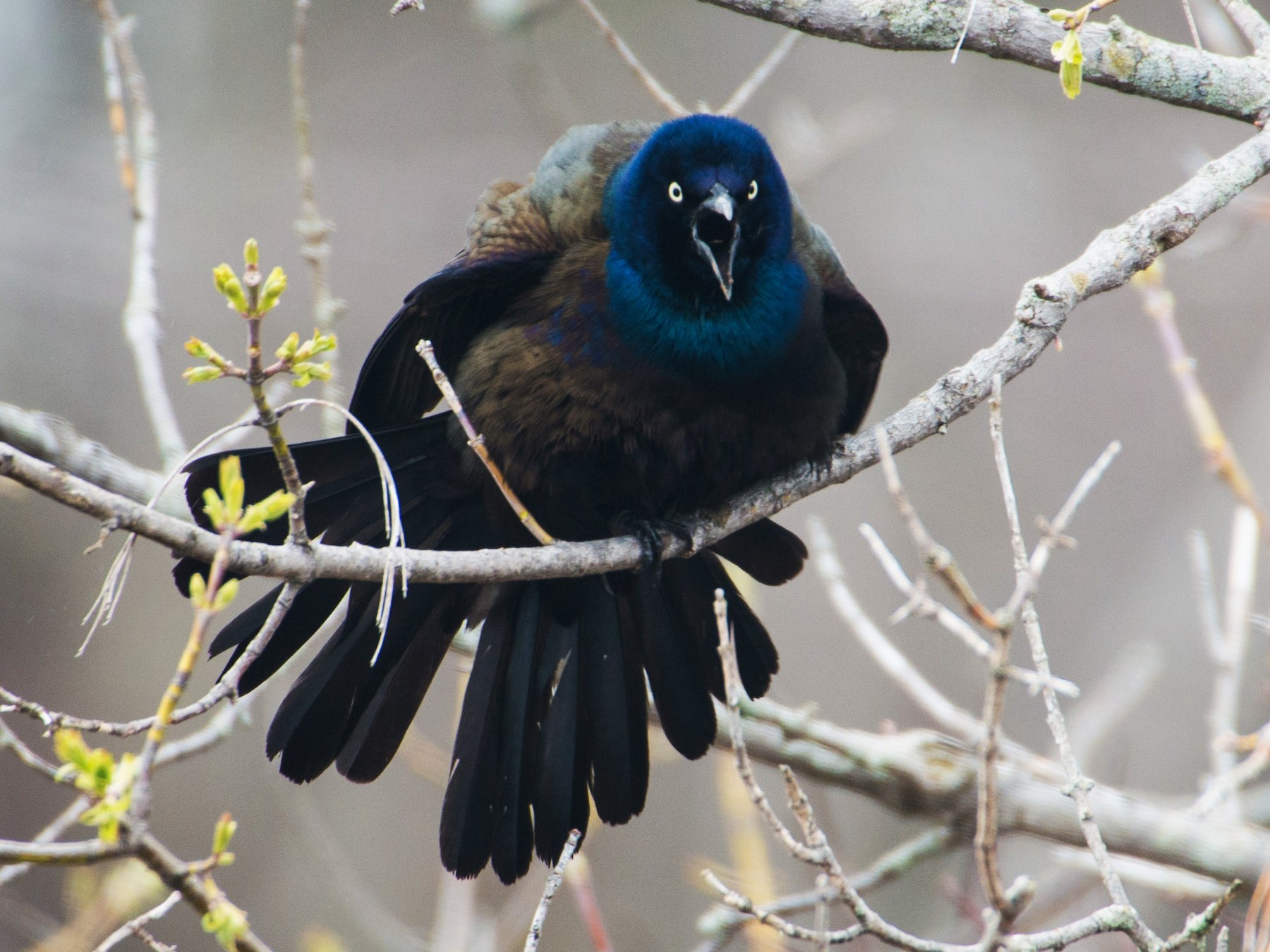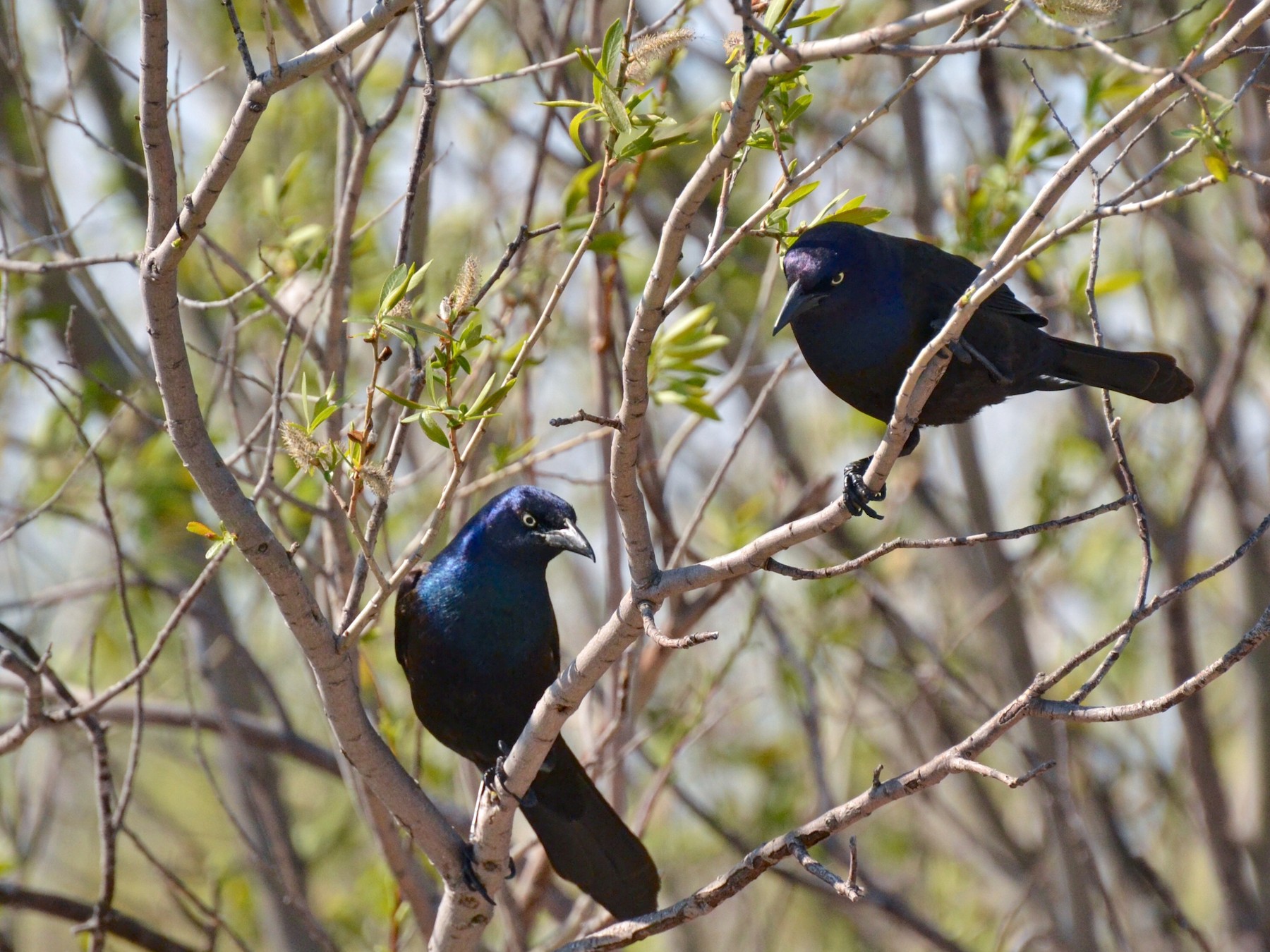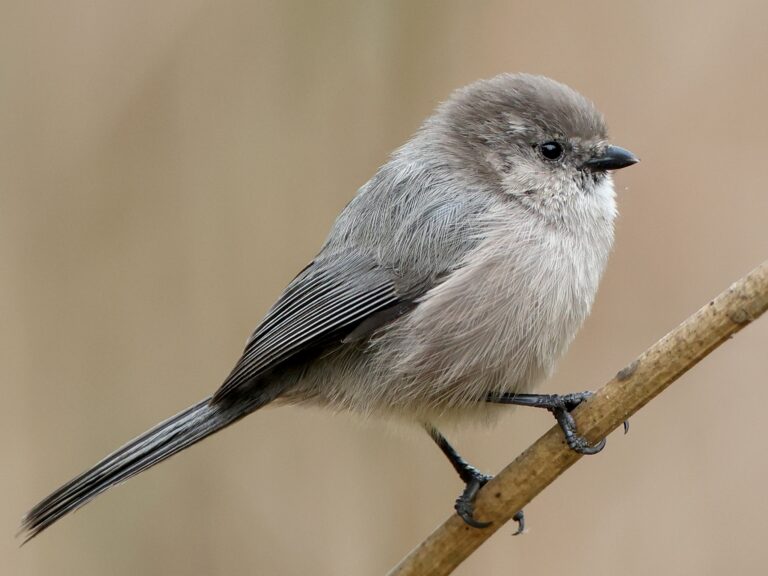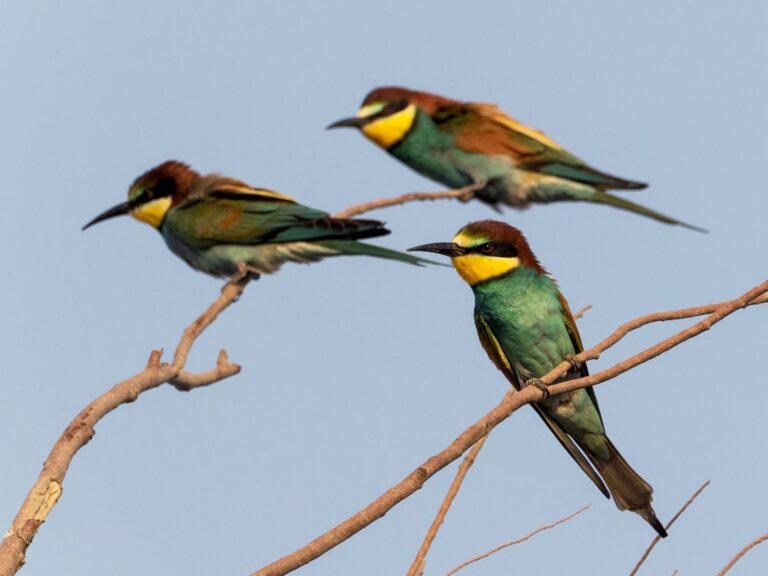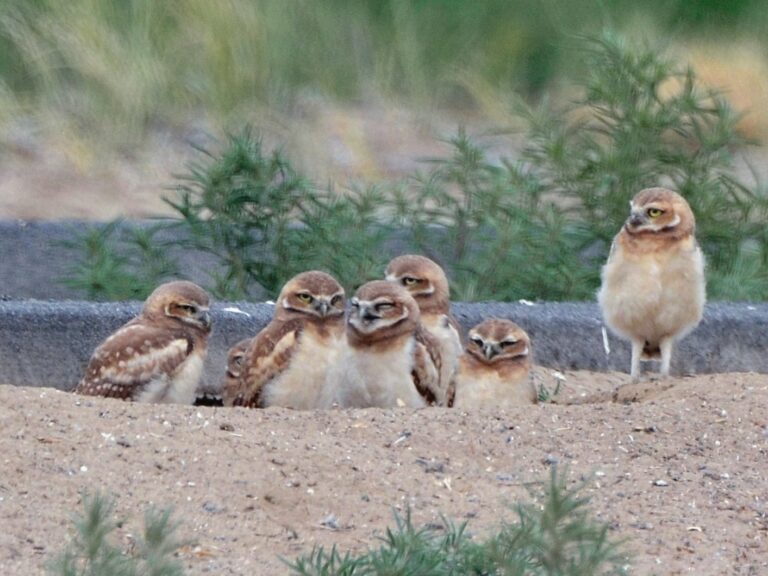Common Grackle: The Vibrant Bird You’ll See Everywhere This Summer
The Common Grackle is a large blackbird known for its striking appearance and social behavior. This bird is recognized for its iridescent plumage and distinctive yellow eyes, making it a fascinating sight in many areas of North America.
These grackles are commonly found in urban settings, as well as in rural habitats. They showcase their adaptability to different environments. Grackles are known for their complex social structures and varied feeding habits. They often gather in large flocks, which can be an impressive sight during migration seasons.
Their diet includes insects, grains, and sometimes even fruits. This broad range of food sources helps them thrive in various habitats. Observers of nature are often intrigued by the vocalizations and courtship displays that characterize this species. This makes the Common Grackle a popular subject for birdwatchers.
Key Takeaways
- The Common Grackle is a distinctive blackbird found across North America.
- It exhibits varied feeding habits and thrives in both urban and rural areas.
- Understanding its behaviors and interactions enhances appreciation for this bird species.
Sign Up for Our Monthly Newsletter
Every month we send out our newsletter about interesting (and sometimes quirky) things happening in the world of birding. Give it a try!
Overview and Classification
The Common Grackle, known scientifically as Quiscalus quiscula, belongs to the family Icteridae. This section covers its taxonomy, its relation to other species, and its distinctive features.
Taxonomy and Scientific Name
The Common Grackle is classified under the order Passeriformes and the family Icteridae, which also includes other blackbirds and grackles. Its scientific name, Quiscalus quiscula, reflects its genus, Quiscalus, which is shared with several related species.
The species is further divided into three subspecies: the Eastern Common Grackle, the Florida Common Grackle, and the Western Common Grackle. Each subspecies exhibits slight variations in size and coloration, depending on geographic location.
Family and Related Species
As a member of the Icteridae family, the Common Grackle shares its habitat with various related birds such as the Red-winged Blackbird and the Brown-headed Cowbird. Icteridae species are known for their resourceful feeding habits and adaptability to different environments.
Other members of this family often display similar social behaviors, frequently forming large flocks. This communal living offers benefits like increased vigilance against predators.
Identification and Physical Description
The Common Grackle is easily recognizable by its striking features. It has glossy black plumage that can appear iridescent in sunlight, displaying shades of green and purple.
Its long tail, often held in a slight fan, contributes to its unique silhouette. Additionally, the Common Grackle has bright yellow eyes that stand out against its dark feathers.
Adult males are typically larger than females and can reach about 12-15 inches in length. Their slender bodies and pointed wings enable them to navigate various habitats with ease.
Distribution and Habitat
The Common Grackle is found across a broad geographical range, thriving in various habitats. It is known for its adaptability, which contributes to its widespread distribution and population growth.
Native Range and Migration
The Common Grackle (Quiscalus quiscula) primarily inhabits North America. Its native range includes southern Canada, the United States, and parts of Mexico. Populations in the northern regions often migrate south during cold months. Migration typically occurs in flocks, which can number in the thousands.
This behavior allows them to find food and suitable environments as seasons change. Their ability to travel long distances helps them access new resources efficiently.
Preferred Habitats
Common Grackles are highly adaptable birds. They thrive in a variety of habitats, from urban areas to rural fields. They are often spotted in parks, agricultural lands, and near water bodies. These birds prefer environments where they can find ample food and nesting sites.
They are especially attracted to open spaces with trees or shrubs for nesting. Their adaptability makes them successful in suburban areas as well.
Regional Populations
Regional populations of Common Grackles vary significantly. In Texas, for instance, they are quite common and can be found year-round.
The warm climate and abundant food resources support large numbers. In northern areas, populations may decrease during winter when they migrate to warmer regions. Understanding these variations is important for conservation efforts. Effective management of habitats can support stable populations in each region.
Behavior and Social Structure
The behavior and social structure of the Common Grackle highlight their complex interactions within flocks. This section examines their flocking habits and how they communicate through vocalizations.
Flocking and Social Dynamics
Common Grackles are highly social birds that often gather in large flocks. These flocks can consist of thousands of individuals, especially outside of the breeding season. Male and female grackles participate in flocking for various reasons, including foraging and protection from predators. Within these flocks, there is a clear hierarchy.
Male grackles tend to establish dominance through displays of aggression. They often position themselves at the center of the group during feeding to access food first.
Female grackles, while less dominant, play essential roles in maintaining the social structure of the group. Flocking behavior enhances their survival and maximizes their foraging efficiency, allowing them to locate food more effectively.
Vocalizations and Communication
Communication among Common Grackles is diverse and complex. They produce a wide range of vocalizations, each with specific meanings. These sounds can indicate alarm, food availability, or social interaction. Grackles use different calls to maintain cohesion within flocks.
The variety of sounds helps to alert others to potential threats. For instance, a sharp, frantic call might signal danger.
Additionally, male grackles often flaunt their vocal abilities during mating displays to attract females. This vocal diversity plays a crucial role in reinforcing social bonds and ensuring successful interactions within their groups. For further details, explore the communication dynamics of common grackles.
Feeding Habits and Adaptations
Common Grackles have diverse feeding habits and remarkable adaptations that allow them to thrive in various environments. Their diets reflect their resourcefulness, while their foraging techniques play a crucial role in their ecological presence.
Diet and Foraging Techniques
Common Grackles primarily consume a wide range of food, including insects, grains, and fruits. They are known to eat seeds, berries, and various food items they may find in urban settings.
These birds are skilled foragers. They often use their strong bills to uncover food on the ground, such as small acorns or insects hidden beneath leaves. In a single feeding, a grackle can consume multiple prey items. Additionally, they may take advantage of foraging in groups, which helps them locate food more efficiently.
Research suggests that grackles often forage during specific times of the day, maximizing their chances of finding food. They may also exploit other resources like formic acid produced by ants, enhancing their diet and even serving a role in parasite control.
Role in Ecosystem
Common Grackles play a significant role in their ecosystems. As omnivores, they help control insect populations, which contributes to a balance within their habitats. By feeding on different types of insects, they help prevent outbreaks of pests. Moreover, grackles contribute to seed dispersal through their feeding habits.
When they consume fruits, they often drop seeds in new locations, aiding in plant growth. Their ability to adapt their diet based on seasonal availability demonstrates their resilience.
Reproduction and Life Cycle
The reproduction and life cycle of the Common Grackle involves distinct behaviors and stages. This section covers the breeding behavior, nesting practices, and the development of young grackles.
Breeding Behavior
Male grackles are known for their elaborate courtship displays. They often perform impressive aerial shows to attract female grackles. During mating season, males establish territories and call out to signal their presence. The vocalizations can be quite varied, serving to communicate with potential mates.
Once a female arrives, the male may engage in a series of displays, including puffing up his feathers and showing off his bright colors. Females choose mates based on these displays, selecting males that appear strong and healthy.
Nesting and Parental Care
Female grackles build nests, typically in shrubs or trees. They use twigs, grass, and other materials to create a sturdy structure. Once the nest is complete, the female lays between three to six eggs. Both parents participate in caring for the eggs.
Males assist in defending the territory while females incubate the eggs for about 11 to 14 days. After hatching, both parents feed the chicks a diet rich in insects and fruits.
Development and Lifespan
After hatching, the chicks are altricial, meaning they are born helpless and rely on their parents for care. They begin to grow feathers and learn to fly at about two weeks old.
During this time, both male and female grackles actively forage for food to support their growing offspring. The lifespan of a Common Grackle in the wild averages around 2 to 4 years, though some individuals have been known to live longer under favorable conditions.
For more detailed information, you can explore how initial investment, clutch size, and brood reduction affect their reproductive strategies. The grackle’s unique breeding biology offers a fascinating look into their development.
Similar Species and Interactions
The Common Grackle interacts with several similar species, particularly within the Icteridae family. Understanding these interactions and comparisons can provide insight into its behavior and ecology.
Comparison With Other Blackbirds
The Common Grackle closely resembles other blackbirds, such as the Red-winged Blackbird and the Rusty Blackbird. While the Common Grackle is larger and has a more elongated body, the Red-winged Blackbird is distinguished by its bright red shoulder patches.
Great-tailed Grackles, found in the southern U.S. and Mexico, are even larger than the Common Grackle and have longer tails, which they often display during courtship. The Bronzed Grackle is another similar species, known for its iridescent feathers.
In contrast, the Purple Grackle has more vibrant plumage, mainly seen in the males. These variations in size and color help differentiate them in mixed-species flocks.
Interactions With Other Birds
Common Grackles often share habitats with other bird species, like European Starlings and Brown-headed Cowbirds. They have been observed competing for food resources, especially in urban areas.
Grackles and Starlings may flock together, which can lead to unique feeding strategies, such as taking advantage of human food sources. The Red-winged Blackbird is commonly seen in wetlands alongside Common Grackles.
Interactions between these species include aggressive territorial displays, particularly during the breeding season. Grackles may compete with Brown-headed Cowbirds, which are known for their brood parasitism. Common Grackles can sometimes push these intruders away from their nesting areas.
Hybridization and Range Overlap
Hybridization occurs between Common Grackles and Great-tailed Grackles in areas where their ranges overlap, particularly in parts of the southern United States. This hybridization can result in offspring with mixed traits, complicating identification.
These hybrids may exhibit characteristics of both parent species, particularly in size and plumage color. The overlap in territories also leads to competitive interactions.
In some regions, such as Texas and California, these two species can be found nesting in proximity. Observing their differences in behavior and calls can help ornithologists understand the dynamics of these closely related species.
Frequently Asked Questions
Many people have questions about the Common Grackle, from its physical features to its behavior in the environment.
What are the distinguishing features between male and female Common Grackles?
Male Common Grackles are typically larger than females and have shiny black plumage with a purple sheen. In contrast, females are smaller and have a more subdued, brownish coloration. Both genders have long tails and distinctive yellow eyes.
What is the geographical range of the Common Grackle?
The Common Grackle is primarily found across North America. They are common in the eastern and central United States, extending into parts of Canada and Mexico. Their habitat includes urban areas, farms, and wetlands.
How does the sound of a Common Grackle differ from other birds?
Common Grackles produce a variety of sounds, including harsh caws and whistles. Their vocalizations are often louder and more varied than those of many other birds.
What does the migration pattern of Common Grackles look like?
Common Grackles migrate seasonally, typically moving south in the fall and returning north in the spring. They often travel in large flocks during migration.
How big is a Common Grackle compared to similar bird species?
Common Grackles are about 11 to 13 inches long, making them larger than some similar birds, like the American Robin. They are comparable in size to the Red-winged Blackbird but have longer tails and a more elongated body shape.
Can Common Grackles be beneficial to a backyard ecosystem?
Yes, Common Grackles can provide benefits to backyard ecosystems. They help control insect populations by feeding on pests. Their foraging behavior can also assist in seed dispersal, promoting plant growth and diversity in gardens.
